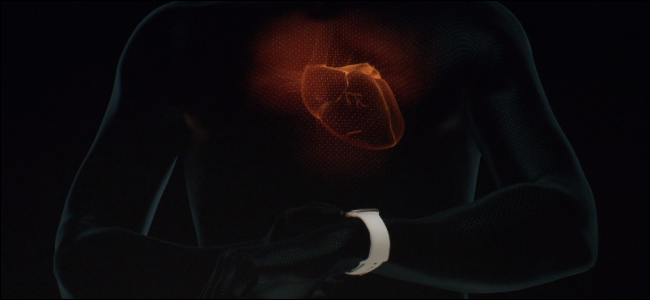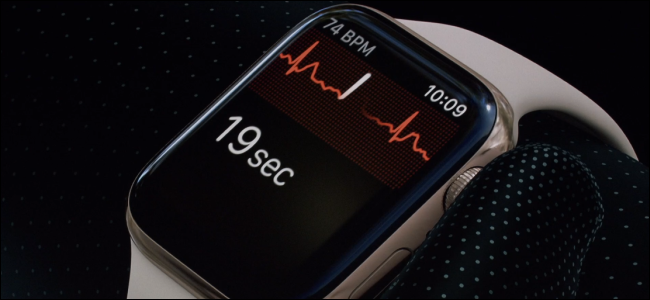Quick Links
That headline sounds dramatic, doesn’t it? Honestly, it reads like one of those clickbait titles you see on Facebook or maybe YouTube, but this is the true story of how my father died, and how the new Apple Watch might have saved his life.
How It All Started
Just after Christmas in 2013, my father had a stroke. It ended up being relatively mild, but it put him in the hospital for a week. The thing about a stroke is that it’s often the result of other problems, and one of those problems can be, or be the cause of, heart disease.
I’ll leave out the two years that followed that initial event: it involved several visits to the hospital, during which my father grew more and more frustrated. During one of those visits, another condition arose. It was a form of heart disease known as tachycardia. His heart started beating so fast, he passed out and fell. The staff at the hospital performed CPR for 45 minutes to resuscitate him, and they put him in the ICU for a procedure known as Therapeutic Hypothermia. His brain had been without oxygen for long enough that there were questions about brain damage.
Would my father wake up? Would he be a vegetable?
Those were the hardest few days of my life, waiting for him to wake up, not knowing if he would live or die, or what kind of quality of life he’d have after that stay. I remember praying, in the waiting room of the hospital, asking God to give us some more time.
Amazingly, he came out of the hospital in good spirits, but the doctors decided it was time to implant a pacemaker. So back he went, and he eventually came home with a shiny, new pacemaker. (I assume it was shiny, but I couldn't see it---just the lump on his chest where they implanted it.)
The Day It Happened
Then, a few days before Valentine’s day, my father had a seizure and went back to the hospital. He was only there overnight, and nobody could figure out what the seizure was. However, he came home sick---it looked like a case of the flu. He was desperate to not go back to the hospital, so my mother waited nearly two days before deciding he had to go back to the ER. She was getting her purse and keys when he slumped over at the dinner table.
He passed away that night. His heart had just stopped. On Valentine’s Day.
The thing is, his pulse, his blood pressure, and everything else seemed normal. (Yes, they checked that stuff twice a day.) Everything my parents had the power to test at home seemed perfectly fine. My mother didn’t know that one of the most common symptoms of a heart attack is like a bad case of the flu. My father’s heart was dying for two days, and they didn’t realize it until it was too late.
What If It’s Not a Heart Attack?
I’m going to digress for a moment and talk about something that happened to me about two years ago. I was sick with flu-like symptoms. I was “praying to the porcelain god” and not even able to stand up for more than 30 seconds at a time. And my chest hurt. A lot.
The flu symptoms went away, but the chest pain didn’t. I went to the ER on a Wednesday night, hoping that they would not tell me I had a heart attack. As it turns out, I just had some inflammation in my rib cage, a common condition known as Costochondritis. One of the things I learned (thanks, WebMD) is that Costochondritis can feel like a heart attack. The number one recommendation is to “go to the emergency room” if you’re not sure.
When you go to to the ER with chest pains, the first thing they do is hook you up to an EKG. It’s a complicated machine with lots of wires that they stick all over your body. A professional records the data, and an MD reads the chart. It’s all a complicated process that boils down to “is the heart beating regularly, or are there signs of an irregular heartbeat?”
A hospital EKG has something like 12 leads. The technician put leads on my arms, my legs, my chest, and the machine then recorded the electrical activity in my body. I don’t know all the technical details, but the long and short of it is that it can see an electrical picture of your heartbeat. If your heart rhythm is irregular, or if your heart isn’t beating in quite the sequence it should, an EKG will show that. The most common form of heart disease, where plaque is blocking a blood vessel, will show up in this test.
Of course, the hospital doesn’t just rely on one test: they also draw blood and perform an X-Ray. The blood test looks for proteins released during a heart attack, and the X-Ray looks for other problems that can cause chest pain.
Identifying the Problem
You don’t always know you’re having a heart attack. My father died because he thought he had the flu. I took a trip to the ER for what turned out to be a mild, if painful, inflammation.
Others also go through the same things, becoming much more sick than necessary, or even dying, because they don’t seek help. Writer, director, and comedian Kevin Smith recently went to the ER for a stomachache, and the doctors ended up performing heart surgery. He got really lucky. The doctors told him a delay of even a few more hours would have killed him.
That’s the trouble with your heart---you don’t know when it’s what's causing your pain or when it’s just a sore rib or gas. Those nerves don’t get a lot of use, and our brains don’t always know how to interpret their signals. So we get it wrong, and our natural desire to not go to the hospital means we dismiss the signs.
Every time my chest twinges, I’m not sure whether to grab a bottle of Advil or call an ambulance.
So, What About the Apple Watch?
Finally, we come back to that headline. On September 12, 2018, Apple announced a surprising new feature in the Apple Watch: a built-in heart monitor---basically a portable EKG.
The current generation Apple Watch (the Series 3) uses an optical sensor to detect the wearer’s pulse rate. This works for monitoring exercise, but it’s not a medical device. Today, Apple announced that they had added an EKG to the Apple Watch Series 4. The new watch can read your heart rhythm and notify you of specific problems---or give you some peace of mind if nothing is wrong.
If this watch had come out three years ago, I would have strapped it to my dad’s wrist, and he might have spent Valentine’s day flirting with pretty nurses rather than suffering in his living room. He would still be here to enjoy Encore Westerns, flirt with waitresses, and tell bad jokes.
It seems weird that a wristwatch makes me finally sit down and write about my father’s death. Honestly, this is the first I’ve written about it since it happened, and it’s hitting me hard. But it hit home today how Apple isn’t just making toys. They’re making products that can save lives. Someday, when I’m having a real heart attack and am tempted just to attribute it to more costochondritis, this watch will say “go to the hospital. Now.”
Closing Thoughts
An EKG on the wrist represents knowledge and power; for the first time, it gives us the power to see for ourselves what’s going on. It means we don’t need to panic every time something hurts. That knowledge gives us enough warning to rush to the hospital if something is wrong, even if the physical symptoms are masquerading as something else. It can save your life, or just put your mind at ease.
Would it have saved my father’s life? We will never know, but it certainly might have given him and my mother more warning. They could have made it to the hospital sooner, and we would have had more time.
Cardiac health is an important and complicated topic. No single consumer device can detect everything that’s wrong, but devices like the Apple Watch Series 4, or the AliveCor KardiaBand are important steps toward a future where individuals have more control over their health and more information about what’s going on inside their bodies. Will this lead to home-care tricorders and holographic doctors, replacing the need for precautionary ER visits and unnecessary ambulance rides?
I hope so.
Links
You can read about Alivecor’s technology on their website.
We've written about the Apple Watch 4 if you want to learn more and it's available on Apple's site.
Finally, please don’t overlook symptoms of a heart attack or other heart problems. Know the signs so that you can take care of yourself or others.


